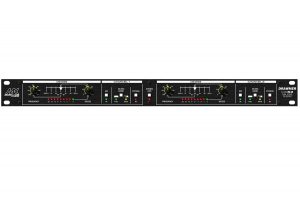Description
Drawmer MX60 Pro Channel Strip Product Features
Input Stage: The input stage may be switched to accept mic, line, or instrument level signals – the XLR mic input has switchable 48V phantom power and phase reverse, while the line input is on both a balanced +4dB TRS jack and an unbalanced -10dB jack. A high impedance Instrument jack is located on the front panel for use with electric guitars, basses, synths and drum machines.
Program Adaptive™ Gate: Drawmer’s proprietary Program AdaptiveTM circuitry means that all the time constants are automatically optimised for the material being processed. This enables stable gating and eliminates ‘chatter’ around threshold. Controls via a single variable threshold and switchable fast/slow auto release.
De-Esser: Floating threshold de-ess operation where the de-esser automatically and continually readjusts its own threshold level. The MX60 de-esser is almost completely automatic requiring the user only to select a switchable male or female setting and to adjust the amount of de-essing required. Only the sibilant sounds are subjected to gain reduction so that the lisping effect of simpler de-essers is avoided.
EQ: High and low shelving sections as well as fully parametric mid range EQ with variable frequency, ‘Q’, and ±18dB cut/boost.
Compressor: High quality VCA compressor based on that of the MX30 and DL241. Both the attack and release times are Program AdaptiveTM leaving the user with only ratio, threshold and make-up gain to adjust.
Tubesound: Multi band ‘tube saturation’ allows users to create subtle warming, high frequency effects or out-and-out obvious effects via three separate, independently adjustable audio bands. Low settings on all bands enable replication of classic tube mic sounds.
Output: The output stage includes a limiter with a preset threshold (+16dB) and a variable master fader with output bargraph metering which sets the overall output level from OFF to +15dB. A two stage soft/hard limiting approach has been adopted with yellow and red LEDs signifying soft (approaching limit point) and hard limiting (hitting limit point).







